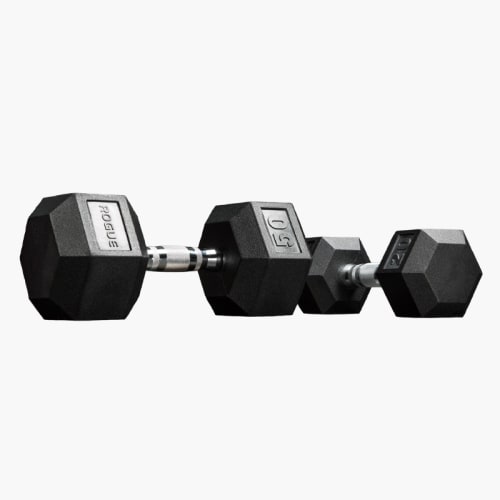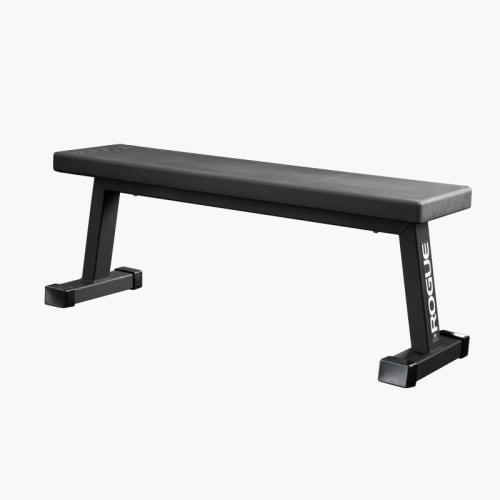Is The Bulgarian Split Squat For Beginners?
The Bulgarian split squat is both an extremely effective and popular lunge variations at this point in time. Many individuals with little to no resistance training experience will likely have seen this exercise being performed in videos on social media and be curious how to implement it into their training regime or even create a training regime around the exercise. In this article I will discuss both why beginners shouldn’t be performing the Bulgarian split squat but also provide a road map of how a beginner can work towards this exercise in a logical manner.
Get weekly roundups of the best training tools in your inbox, every Monday.
No spam – just thoughtful training advice
- What is a Beginner
- What is a Bulgarian Split Squat
- What You’ll Need to Perform a Bulgarian Split Squat
- Should Beginners Be Performing Bulgarian Split Squats
- Which Variations Should Beginners Use Instead
- How Long Should Beginners Use Easier Variations Before Attempting the Bulgarian Split Squat
- Strategies To Learn The Bulgarian Split Squat
- Static Holds
- Bodyweight Volume
- Progressive Overload
What is a Beginner
Before I attempt to answer this question it is important to define what a beginner is to me so you can see if you fit into that category. A beginner is an individual who has little to no resistance training experience. If I were to ask a beginner to perform a variety of movements they would likely not know what they are and would lack technical ability when trying to perform them. Not only would they be technically lacking, but they also would be unable to perform the exercises with high levels of physical capacity through having low levels of strength and muscle mass.
What is a Bulgarian Split Squat
A Bulgarian split squat, also called a rear foot elevated squat in lunge, is an extremely effective lunge variation that is very popular among gym goes and also very popular throughout social media due to its effectiveness at growing the muscles of the glutes. The exercise involves performing a traditional squat in lunge (or split squat) with one foot raised up onto a bench.
Buy Dumbbells ↗
Having one foot raised up on a bench makes the traditional lunge much more challenging for two main reasons. Firstly, it requires a lot more balance to maintain this position. The foot placed on the bench in no longer able to provide as much support to maintain balance meaning the front foot has to do a great deal more work to maintain balance. Secondly it requires you to move through a lot larger range of motion than the traditional squat in lunge, which is great in terms of physical adaptations but for beginners will be extremely challenging if you are just learning to lunge in the first place.
What You’ll Need to Perform a Bulgarian Split Squat
Should Beginners Be Performing Bulgarian Split Squats
No. Beginners should not be performing Bulgarian split squats (rear foot elevated squat in lunges). Individuals who have not reached at least some level of competency with traditional lunges should certainly not be trying to perform one of the most challenging lunge variations available. I coach a lot of beginners and many of them struggle to perform the basic variations that I provide with technical excellence let alone the Bulgarian split squat. Exercise selection should be based upon an individuals ability, therefore if an individual is a beginner it makes no sense for them to be selecting exercises which are far too challenging for them.
Which Variations Should Beginners Use Instead
The wall supported squat in lunge is often the first lunge variation I try with clients to test the waters and see how they hold up in the lunge position. Often times just the amount of mobility required to perform the lunge can make performing this movement challenging. Using the wall as a way to take away the balance element makes the exercise much easier and much more beginner friendly.
The traditional squat in lunge (split squat) is the next variation that I will use to build strength and confidence in the lunge position. Yes, Bulgarian split squat are hard, but so are traditional lunges. Most of the population will find this exercise very challenging let alone performing it with heavy weights. This variation of the lunge has little movement involved and therefore once a strong and stable position is found it doesn’t require too much balance.
Another beginner friendly lunge variation is the reverse lunge. I like to use this once a client has reached some level of competency with the squat in lunge. The reverse lunge requires movement for every repetition, which means we are constantly having to find the correct position, which for a beginner can be very challenging. The reverse lunge should not be done with challenging load until the correct foot positioning can be found very easily.
How Long Should Beginners Use Easier Variations Before Attempting the Bulgarian Split Squat
There is no specific amount of time someone has to do in the easier positions, it is just a question of skill level. Some individuals will gain the skills required in a couple of weeks while others could take over a year. I have had clients who fall into both categories, it is often based on genetics and previous sporting history but also injury history. You need to learn to assess your ability to perform exercises with precision, then make good decisions if your able to attempt the more challenging variations.
As a guideline, if you find performing a squat in lunge or reverse lunge even the slightest bit technically difficult to perform or you struggle to find your balance when performing them then you should not be considering moving up in complexity to the Bulgarian split squat. Take your time to master the basics before moving on to the complex.
Strategies To Learn The Bulgarian Split Squat
Static Holds
Using a static hold in the Bulgarian split squat is a great way to test your ability to balance in this challenging position. We do not have this in our movement library but it involves coming to the start position and pausing for 20-45 seconds, focusing on balance and stability. This is a great way to get a taste for what this exercise will be like and too see how your balance might perform. It goes without saying that the first time you do this is should not be done with weights.
Bodyweight Volume
When learning to perform a new, physically and technically challenging exercise it should be done without load. In order to ingrain excellent positions you should focus on performing the repetitions at bodyweight until you have the sensation that you are technically competent. Remember that not being in a rush with weight training will put you in a position for long term progress.
Progressive Overload
Progressive overload is the basic principle of making things more challenging over time to increase the amount of stimulus to insure physical progress. This essentially means slowly making the exercise more difficult either through adding load or volume (sets and reps), but it can also be done with exercise selection. Through starting with the wall supported squat in lunge and slowly moving to the Bulgarian split squat we are progressively overloading the lunge position. If you can learn to successfully implement progressive overload into your training in a subtle manner you can build a long term physical practice that will put you in excellent physical health.
If you enjoyed this resource you can find more below or try Programme, a fitness app that plans every workout for you – based on your progress, equipment and lifestyle.
This resource was written by Sean Klein. Sean Richard Klein has thousands of hours of coaching experience and a BSc in Sports Science with Management from Loughborough University. He owns a gym in Bayonne France, CrossFit Essor, which runs group classes and a Personal training studio.
Sean Klein



